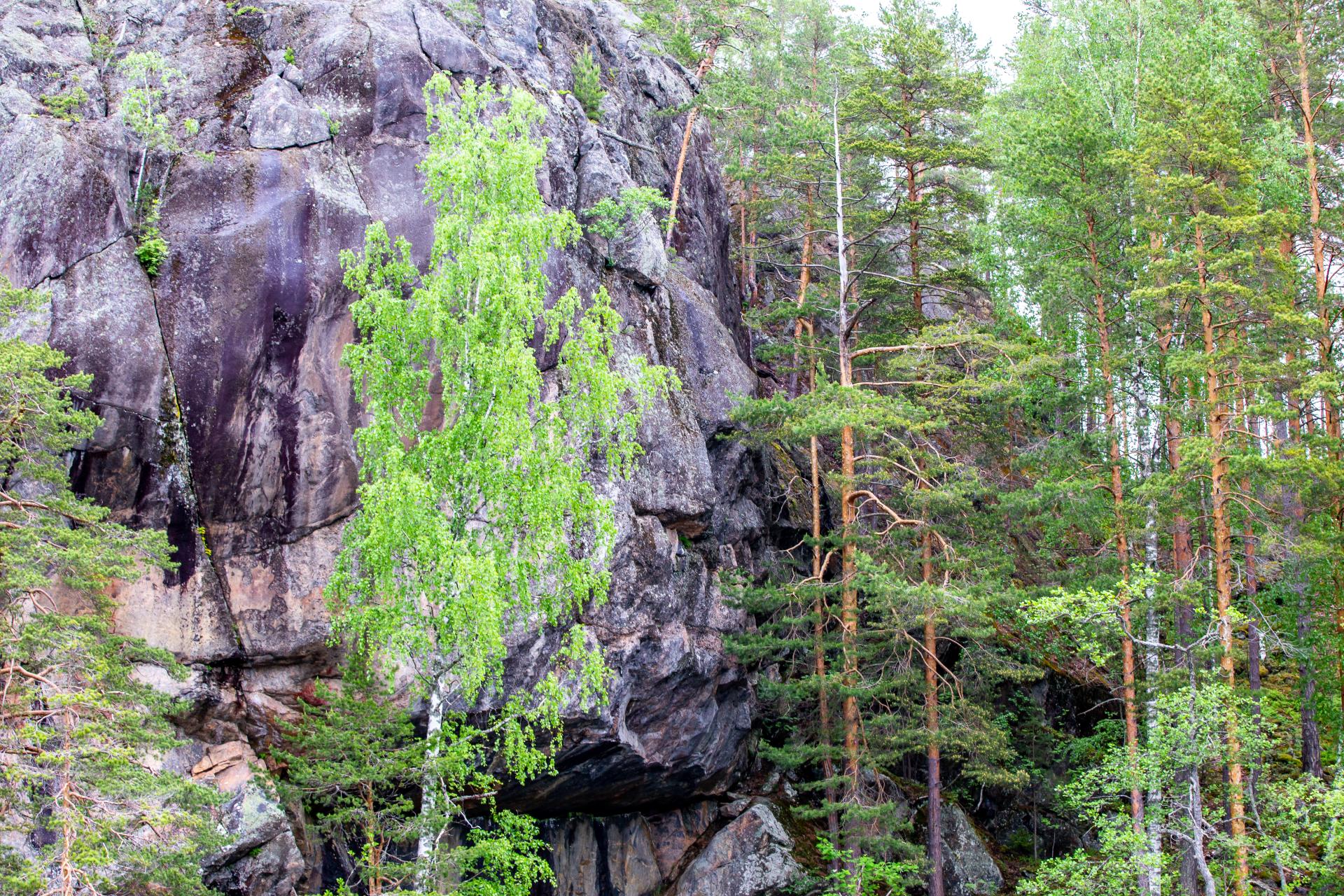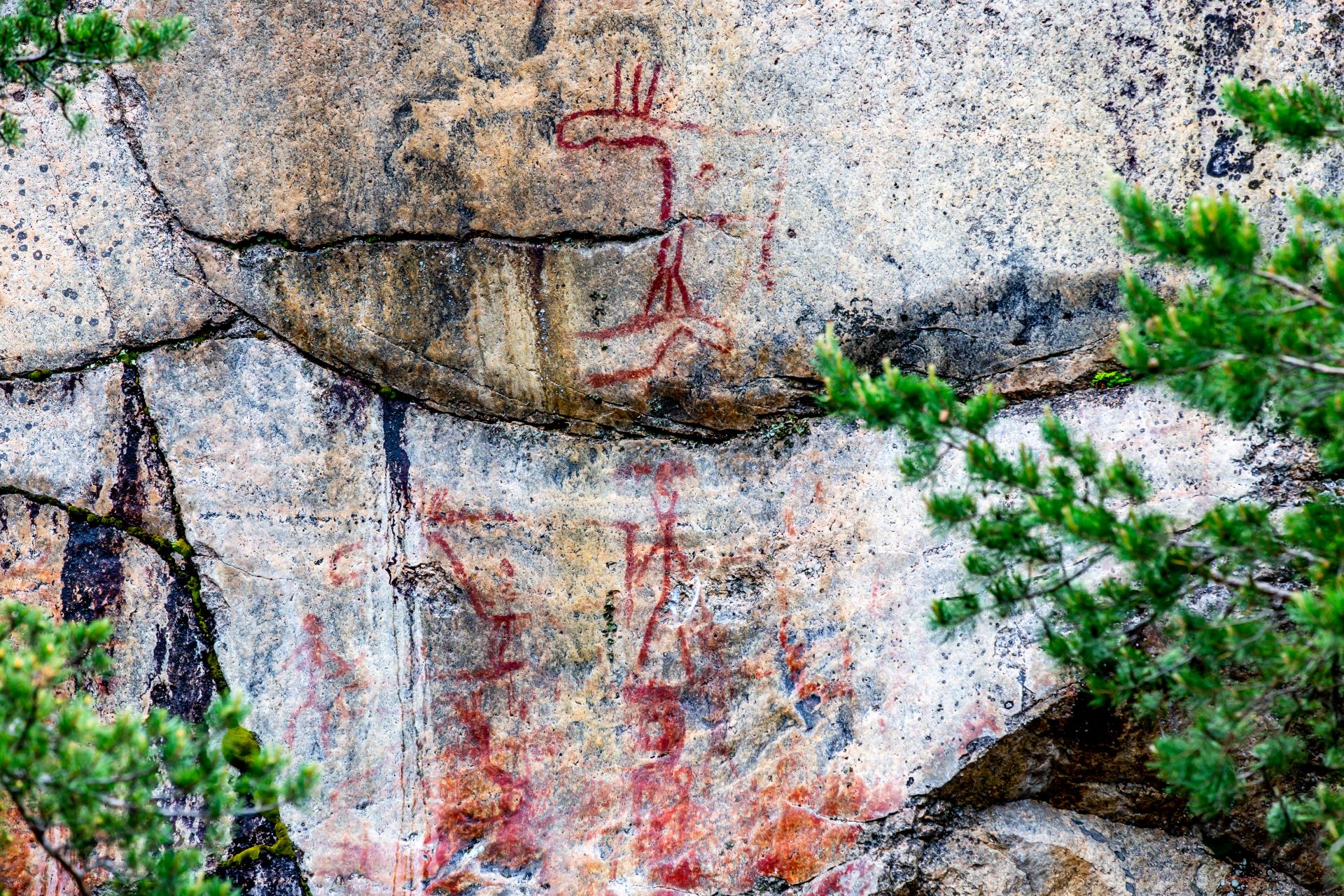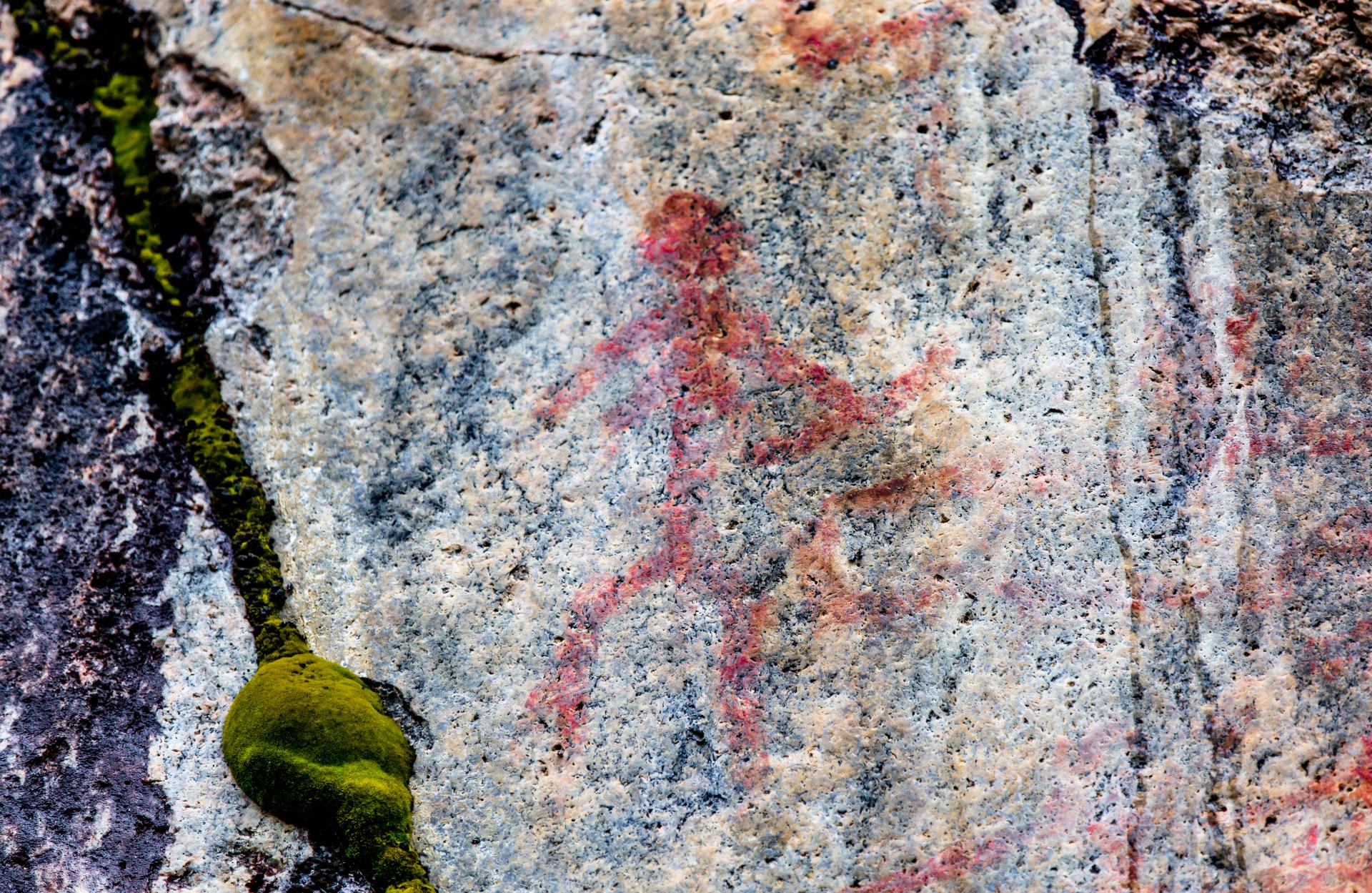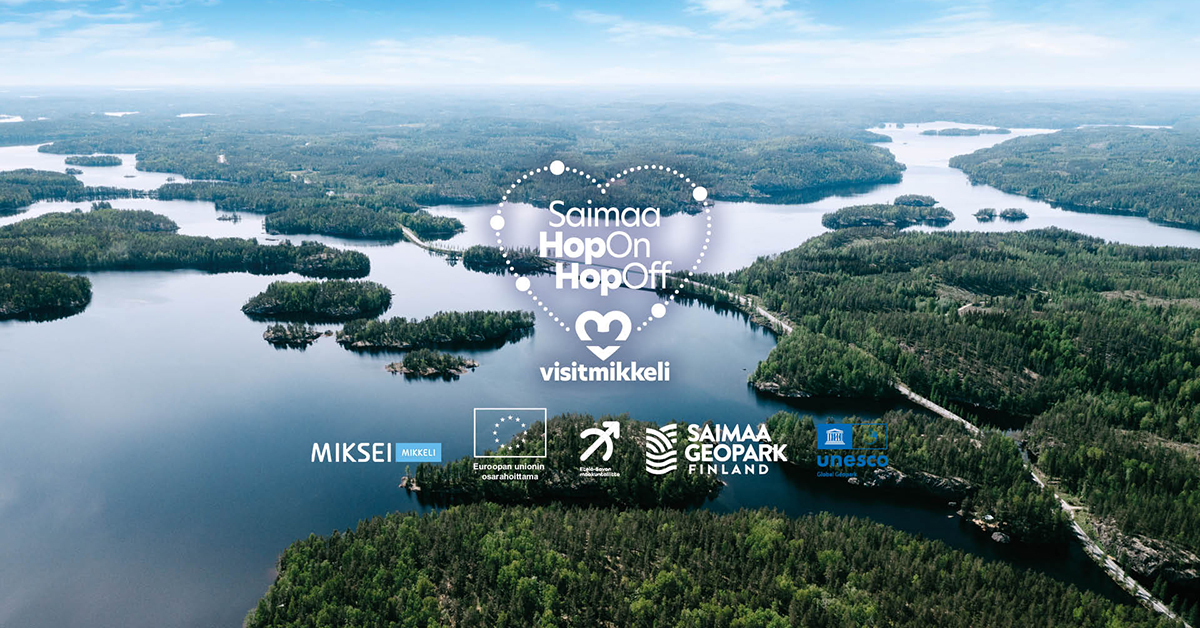Astuvansalmi leads you to the ancient mysteries of Lake Saimaa

Astuvansalmi rock paintings are messages from our ancestors
Astuvansalmi rock paintings, the largest rock art site in the Nordic countries in Ristiina, Mikkeli, is a unique Saimaa Geopark site. The rock paintings were painted on the face of a sturdy, majestic rock located along a natural waterway. The place exudes peace of nature. The rock resembles the face profile of a sleeping person, like a sleeping giant god, which probably made the rock a sacred cult site. The mystery of Astuvan Ukko, "the old man of Astuva", is enhanced by the strange echo reflecting from the rock cavern when you approach the rock from the lake.
A magnificent rock sculpted by the Ice Age, mystical imagery, and an indescribable ambiance combine to offer an experience that resonates deeply with one's entire being.
The slumbering deity of Astuvansalmi Rock – Astuvan Ukko
When approaching Astuvansalmi Rock from the lake, one can glimpse a side profile of a face sculpted by nature itself. Thanks to its shape, the rock may have been perceived as a god or an image of one.
The sleeping deity's face seems to transform with the time of day, and under certain light, it might even appear to slightly open its eyes. Due to its grandeur, the site is believed to have served as a kind of sacred place.

The story of Astuvansalmi begins
The story of Astuvansalmi and its rock paintings dates back approximately 5,000 years, when the meltwaters from retreating glaciers pressed southeastward, carving a path for the Vuoksi River to flow toward Lake Ladoga. This sudden event caused the water level of Lake Saimaa to drop by about two meters, revealing the smooth cliff face of Astuvansalmi, polished by the Ice Age.
On this sun-warmed cliff surface, hunters and fishermen traveling across Saimaa painted the first images using strong, life-symbolising red ochre. These images were created either from boats or atop spring ice. Over millennia, as Saimaa's water level dropped further by several meters, new paintings were added at varying heights. The lowest paintings date back roughly 4,000 years.

|
Astuvansalmi facts
|

Mythical figures tell about the life of prehistoric people
The oldest paintings on the cliff face of Astuvansalmi are about 4500–6000 years old. Altogether about 80 paintings include mythical figures of moose, humans as well as paw and palm prints. It is assumed that the figures represent our ancestors' life, relationship with nature as well as their worldview. The figure of Astuvan Samaani, "Shaman of Astuva", a horned human figure, as well as Astuvan Vene, "Boat of Astuva" represent the connection with the spirits of nature and the afterlife.
There is also one completely unique figure among the paintings: Astuvan Artemis, "Artemis of Astuva" which looks like a female standing with a bow in her hand. Only four female figures have been found among the Finnish rock paintings two of which in Astuvansalmi, one of them the Artemis of Astuva. It has been speculated that the Artemis of Astuva represents an elf of the forest or of an animal species, or a spirit associated with fertility. The second female figure is referred to as Astuvan Akka or Astuvan Tellervo


Amber jewelry found near Astuvan Ukko
The enigmatic smile of Astuvan Ukko has inspired ancient jewelry makers as well. Four Stone Age amber necklaces have been discovered in the lakebed near the cliff of Astuvansalmi. Three of these necklaces resemble the deity figures on the rock, known as "Astuvan Ukko," "Astuvan Akka," and "Astuvan Poika." In addition, at a depth of 11 meters, an amber pendant shaped like a bear's head was found. It is believed that these artifacts were associated with religious rituals held at the cliff.
Feel the mystic of Astuvansalmi
Rock Art Visitor Centre Astuva introduces you to the secrets of prehistoric rock art
Rock Art Visitor Centre Astuva, Finland's only information and guidance center dedicated to rock art, will open in the summer of 2025 in the historic military school's premises in Ristiina. We warmly welcome you to explore the fascinating world of rock art and the story of Astuvansalmi!

Embark on a boat trip to the Astuvansalmi rock paintings
You can visit the Astuvansalmi rock paintings during summer boat trips, also departing from Ristiina. Tickets for these excursions are available on the Visit Mikkeli Shop.

